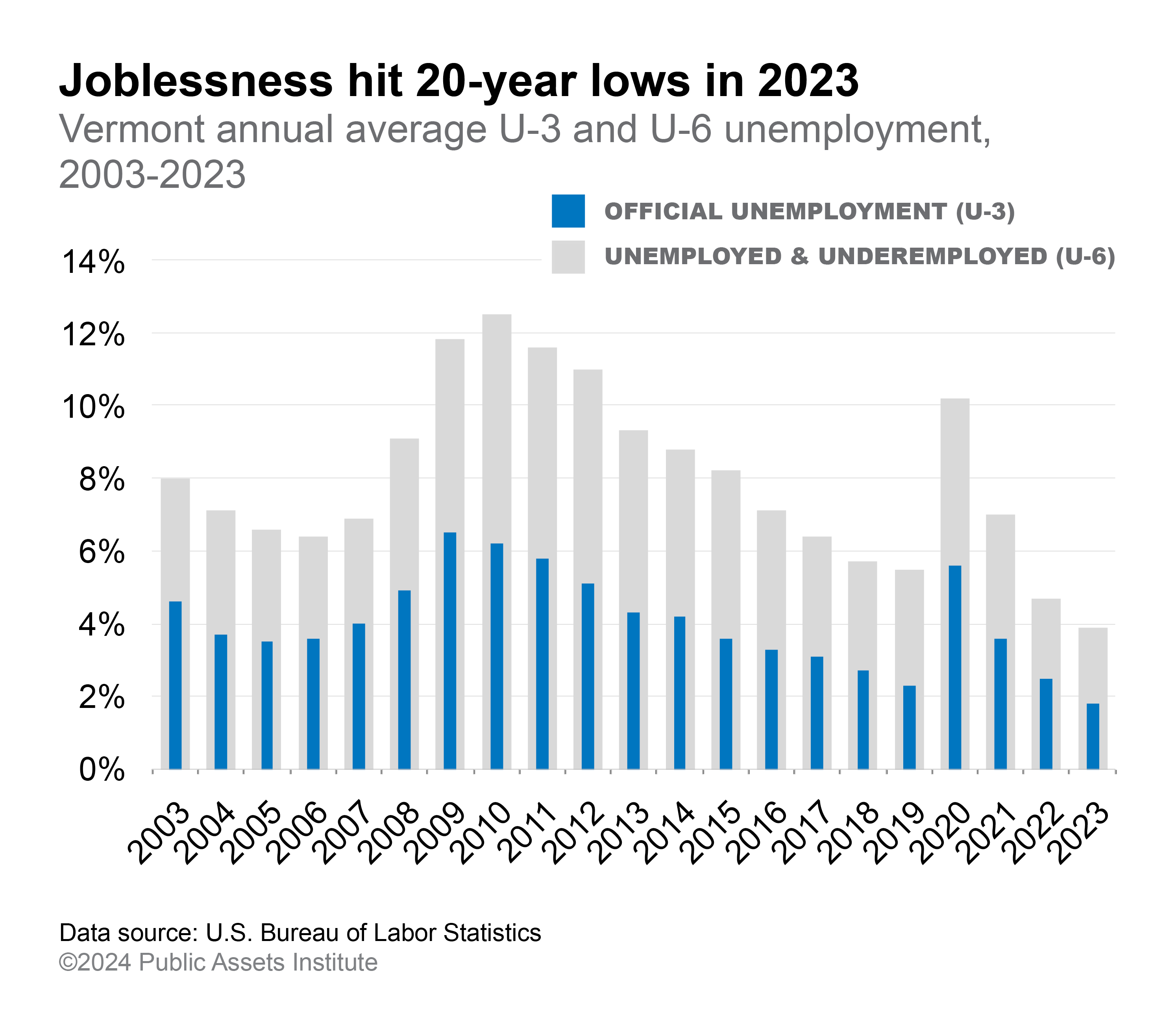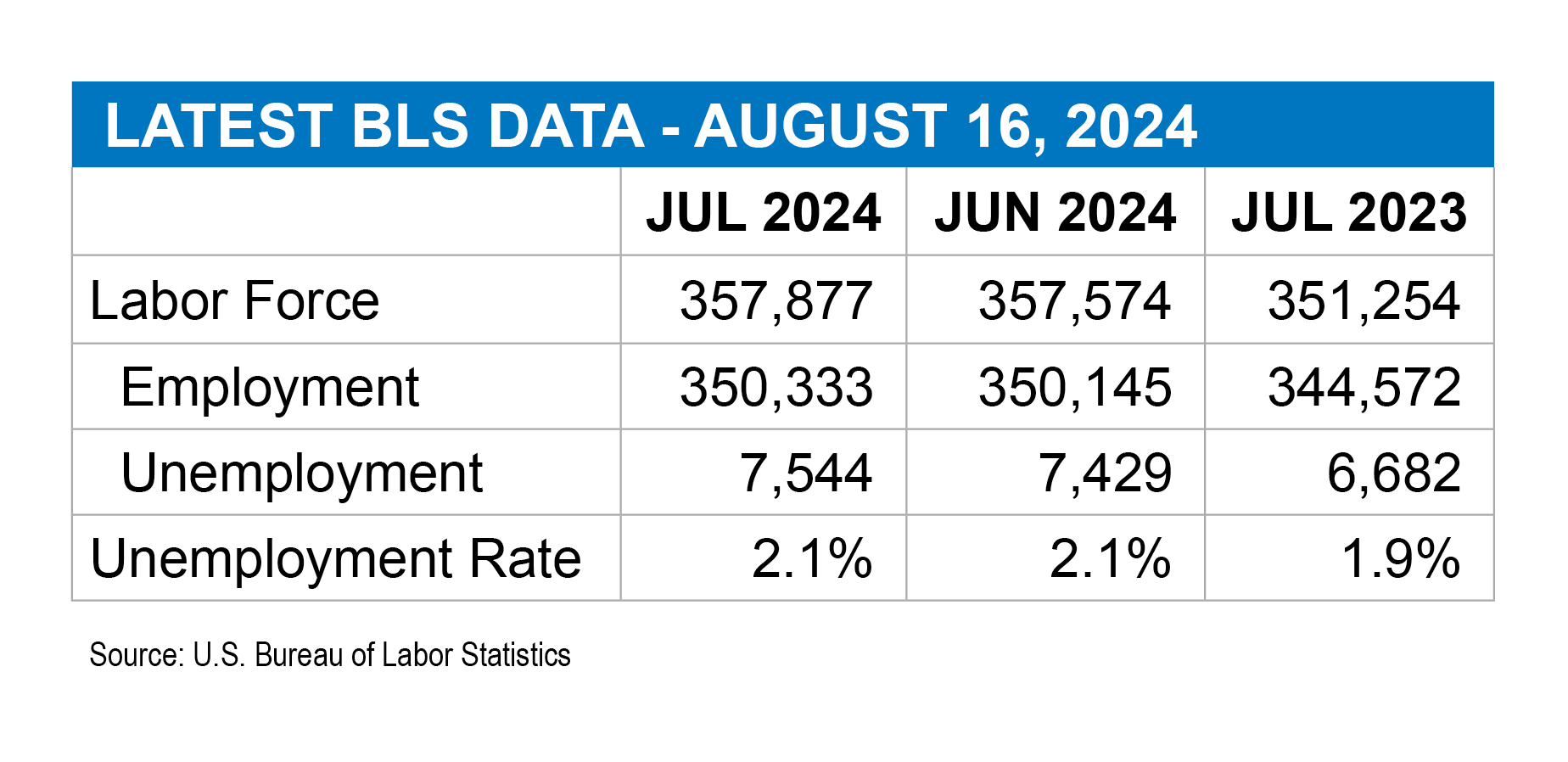Vermont unemployment is falling by all measures, not just the official one
 Vermont’s official jobless rate hit record lows last year as the state continued to recover from the pandemic. That is also true for the broadest measure of unemployment, called U-6, which counts people who have dropped out of the labor force and those who are underemployed. U-6 averaged 3.9 percent for 2023, Vermont’s lowest in 20 years, tying with South Dakota for the lowest rate in the country.
Vermont’s official jobless rate hit record lows last year as the state continued to recover from the pandemic. That is also true for the broadest measure of unemployment, called U-6, which counts people who have dropped out of the labor force and those who are underemployed. U-6 averaged 3.9 percent for 2023, Vermont’s lowest in 20 years, tying with South Dakota for the lowest rate in the country.
The unemployment rates reported every month count only people who are out of work and actively looking for a job. But there are others who would like to work but have stopped looking, as well as part-time workers who would like more hours. These underemployed workers make up the bulk of people not captured in the official jobless rates.
Low unemployment is good for workers—they can command higher wages or switch jobs more easily—but hard on employers, who may have trouble filling positions. While Vermont had 18,000 job openings in June 2024—the highest number in eight months—fewer than 7,500 people were looking for work. In other words, there were more than two job openings for every job seeker. Notably, the data do not provide information on the quality, conditions, and pay of the unfilled jobs, which could be other reasons why employers are struggling to find workers.
THIS MONTH
 National job growth slowed in July, making headlines as a setback for the U.S. economy. This slowdown did not seem to be a problem in Vermont, however, which bucked the national trend and saw significant job growth last month. In fact, July had the fastest growth so far this year, with employers adding 1,600 new jobs.
National job growth slowed in July, making headlines as a setback for the U.S. economy. This slowdown did not seem to be a problem in Vermont, however, which bucked the national trend and saw significant job growth last month. In fact, July had the fastest growth so far this year, with employers adding 1,600 new jobs.

